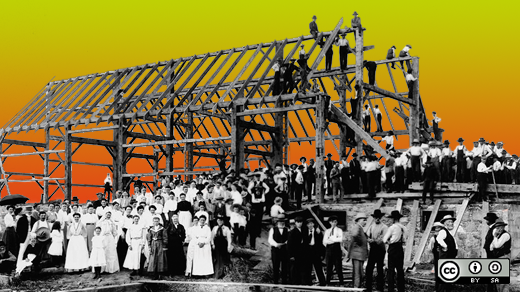Over the last few years, I've had the opportunity to work with many different organizations attempting to build successful communities inside and outside the open source world.
Many of them quickly fall into something I call the tool trap.
Meaning, they immediately jump into a conversation about what tool or technology they will use to support the community:
"Where are we going to put the wiki?"
"Should we build the website using Drupal?"
"What should we call the mailing list?"
"We should starting playing around with [new technology X]."
This is no huge surprise. Great community-building tools are now available to us that never existed before and it is very hard to resist the urge to start nerding out on new technology.
And tools are important. But tools alone do not create community.
People create community.
Which is why when I hear the conversation move too quickly into tools, I try to steer it back to the tried-and-true foundations of solid communities, the things that bring people together and make them want to accomplish great things.
I never hear folks say they want to be part of a community because it has a cool website or because it uses some whiz bang technology. People join communities to contribute to something that holds meaning for them.
So instead of falling into the tool trap, I try to start conversations like these:
What is the dream?
Almost every great community has a shared passion, dream, or purpose. What great thing could this community accomplish? Does everyone agree? If not, what does everyone agree on?
At the core of the community there needs to be a source of energy that drives the community forward in good times and bad. Call it a dream, a purpose, a mission, a raison d'etre, whatever you like, but identify it quickly and then work collaboratively to ensure everyone shares in it.
What are the legends?
Great communities have stories and legends that provide color to the mission. In my experience it is extremely hard to effectively capture passion in the words of a mission or purpose statement.
But passion comes through clearly in stories. A picture is worth a thousand words, and if a picture of the mission can be painted through a story, it will become even more real to members and potential members.
What are the values?
In most cases communities emerge from a group of individuals who find they share not just a common purpose, but a common set of values. Sometimes community efforts fail because, although members share a common mission, they disagree on how it should be accomplished. Often, these differences can be traced back to differences in the personal values of the members.
Figuring out if there are common values within the community will help potential members decide for themselves whether they are a good fit for the community. If their values do not match the community values, they will opt out on their own.
For me, the architecture of participation in the healthiest communities will be built upon the answers to questions like those above.
Once the answers become clear, you'll be much in a much better position to make good decisions about the tools that will best support the community and you can nerd out on technology to your heart's content.






15 Comments